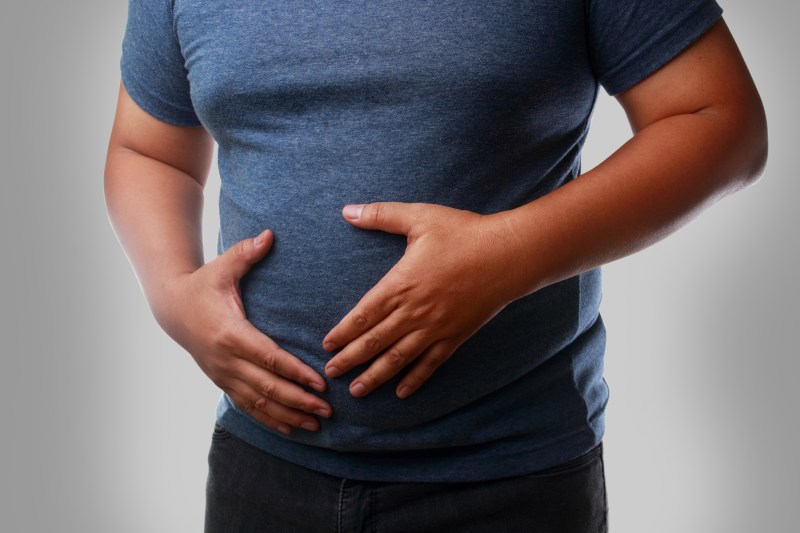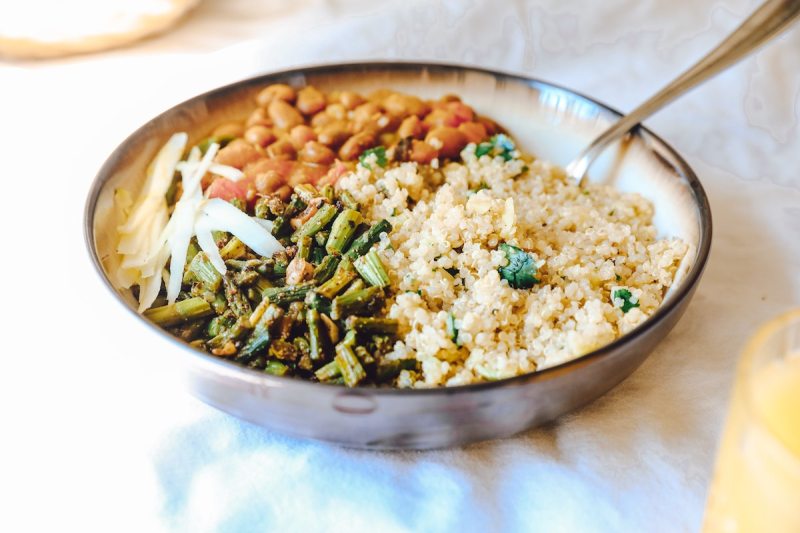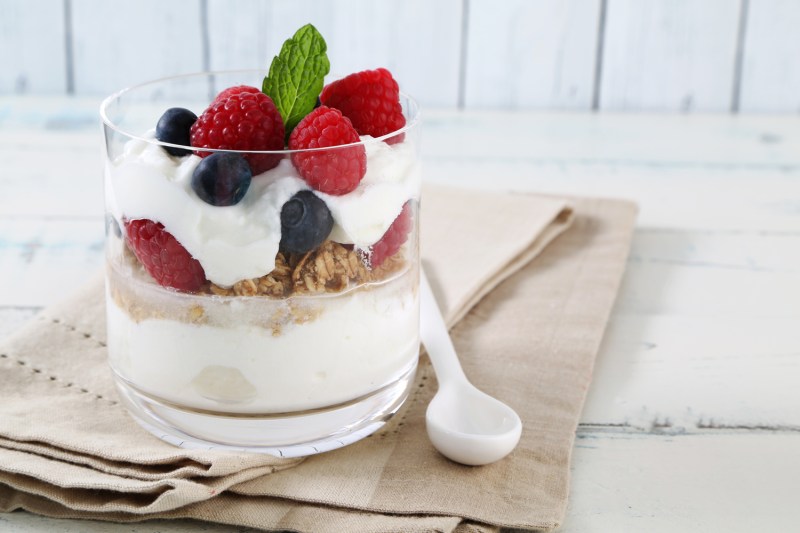Whether you’re looking to lose weight, build muscle, or just improve your overall health, fiber and protein are essential nutrients to prioritize. As a nutritionist, I always have my clients aim to hit a fiber and protein goal daily to support their goals. To make doing this even easier, knowing what foods contain both fiber and protein is important.
Keep reading to learn the benefits of fiber and protein, as well as 10 foods high in fiber and protein to add to your grocery list.
What are the benefits of fiber?

Improves digestive health
Fiber supports healthy digestion by adding bulk to stools and promoting regular bowel movements. It helps prevent constipation, and one study’s results found that “a high fiber intake may reduce the risk of diverticular disease, and individuals consuming 30 grams of fiber per day have a 41% reduction in risk compared to persons with a low fiber intake.” A high-fiber diet can also foster a healthy gut microbiome by feeding beneficial bacteria.
Supports heart health
If you’re someone who is concerned about their cholesterol levels, you will be happy to know that soluble fiber helps lower cholesterol levels by binding to cholesterol in the digestive system and removing it from the body. This reduces the risk of heart disease and improves overall cardiovascular health. Additionally, fiber-rich foods help regulate blood pressure and improve circulation.
Aids in weight management
Are you currently losing weight or focused on maintaining a healthy weight? High-fiber foods should be a priority in your diet, as they are filling and take longer to digest, which can reduce overall calorie intake by curbing hunger. They also stabilize blood sugar levels, preventing energy crashes and overeating.
What are the benefits of protein?

Supports muscle growth and repair
Protein is essential for building and repairing tissues, making it vital for muscle growth and recovery after exercise. It provides the amino acids needed to repair muscle fibers damaged during workouts and helps build lean muscle mass.
Promotes satiety and aids in weight management
Similar to fiber, eating protein-rich foods helps you feel full longer, reducing overall calorie intake. This increased satiety can curb cravings and make it easier to manage weight. High-protein diets are often linked to better appetite control and fat loss while preserving muscle.
Boosts metabolic health
Protein has a higher thermic effect compared to carbohydrates and fats, meaning your body burns more calories in order to digest it. Additionally, consuming adequate protein supports metabolic functions like enzyme production, hormone regulation, and maintaining a healthy immune system.
How much protein and fiber do men need?

Men need about 56 grams of protein daily, according to the Dietary Guidelines for Americans, though active individuals or those looking to build muscle may require more. Protein needs vary based on factors like age, weight, and activity level, typically ranging from 0.8 to 1.6 grams per kilogram of body weight.
For fiber, men should aim for 30 to 38 grams per day, depending on their age. As mentioned before, fiber supports digestion, heart health, and blood sugar regulation.
10 foods high in fiber and protein

Here are 10 foods that are high in both fiber and protein, making them excellent choices to include in your weekly meal plan.
- Lentils – Packed with fiber and protein, lentils offer around 18 grams of protein and 15 grams of fiber per cooked cup, making them a perfect plant-based protein source.
- Chickpeas – With 15 grams of protein and 12 grams of fiber per cooked cup, chickpeas are a versatile option for soups, salads, and curries.
- Black beans – Providing 15 grams of protein and 15 grams of fiber per cooked cup, black beans support digestion and muscle growth.
- Quinoa – This grain provides 8 grams of protein and 5 grams of fiber per cooked cup, making it a great whole-grain option.
- Edamame – These young soybeans contain 17 grams of protein and 8 grams of fiber per cup, so they are ideal for snacks or adding to dishes.
- Greek yogurt – Packed with protein (10 grams per serving), Greek yogurt also contains a small amount of fiber when topped with fruits or granola.
- Chia seeds – These tiny seeds are rich in both protein (5 grams per ounce) and fiber (10 grams per ounce), perfect for smoothies or puddings.
- Oats – Offering 6 grams of protein and 4 grams of fiber per cooked cup, oats are great for breakfast.
- Almonds – Providing 6 grams of protein and 3.5 grams of fiber per ounce, almonds make for a quick and nutritious snack.
- Avocados – High in healthy fats, avocados offer 3 grams of protein and 10 grams of fiber per fruit, and they can be included in salads and sandwiches.
How to implement these foods into your diet

To incorporate these fiber- and protein-rich foods into your diet, consider doing the following:
- Add lentils, chickpeas, or black beans to soups, salads, or wraps.
- Swap rice for quinoa or mix edamame into stir-fries and bowls.
- Include Greek yogurt as a snack or breakfast, topped with chia seeds or oats for added texture and nutrition.
- Enjoy almonds when you need an on-the-go snack.
- Spread avocados on toast, add them to smoothies, or use them in salads.
- Mix chia seeds into smoothies, yogurt, or oatmeal for an easy fiber boost.
- Enjoy oats as a filling breakfast option.
Frequently asked questions

What food is the highest in fiber?
Foods highest in fiber include legumes, such as lentils and black beans, and whole grains, like quinoa and oats. Vegetables, especially artichokes, broccoli, and Brussels sprouts, are excellent sources, and fruits like raspberries, pears, and apples also pack a fiber punch. Incorporating these foods can improve digestion and support overall health.
What are high-fiber and protein snacks?
High-fiber and protein snacks include Greek yogurt with berries, hummus with veggies, or a handful of almonds. Try hard-boiled eggs with a side of sliced avocado, roasted chickpeas, or a chia seed pudding. Energy bars made with nuts, seeds, and oats are also convenient, nutritious options for snacking.
How can I increase my protein and fiber?
To increase protein and fiber, eat more beans, lentils, and chickpeas, which are rich in both. Add vegetables, fruits, whole grains, and nuts to meals. Include protein sources like eggs, Greek yogurt, or lean meats. Snack on seeds, edamame, or trail mix. You always want to choose whole foods over processed options.




